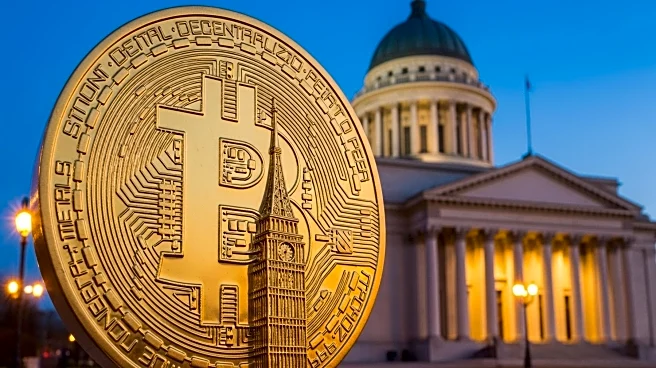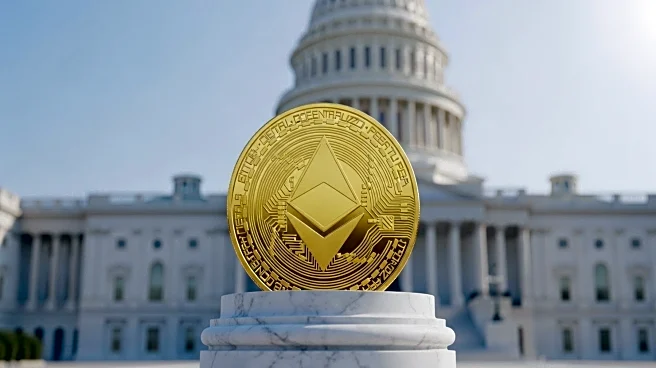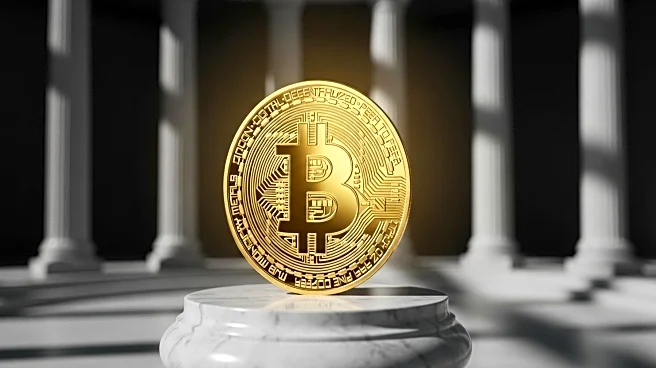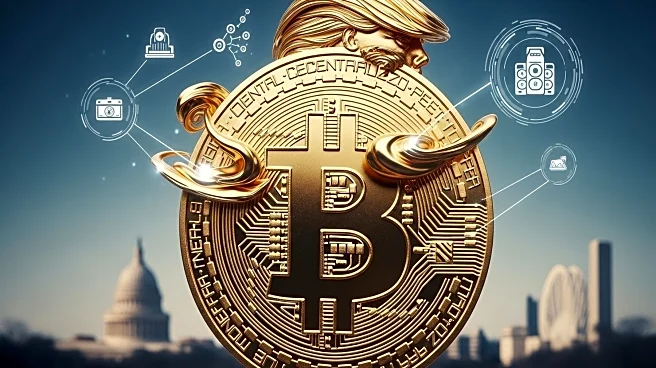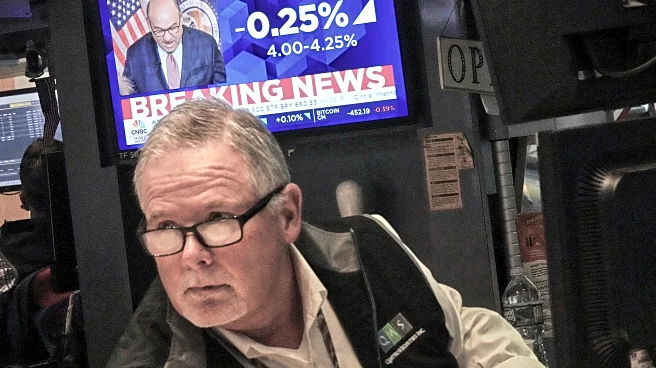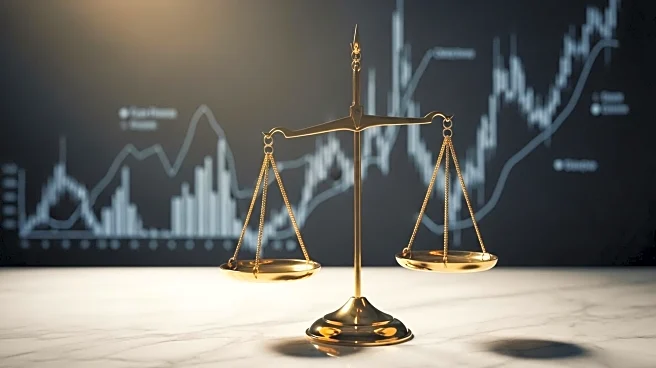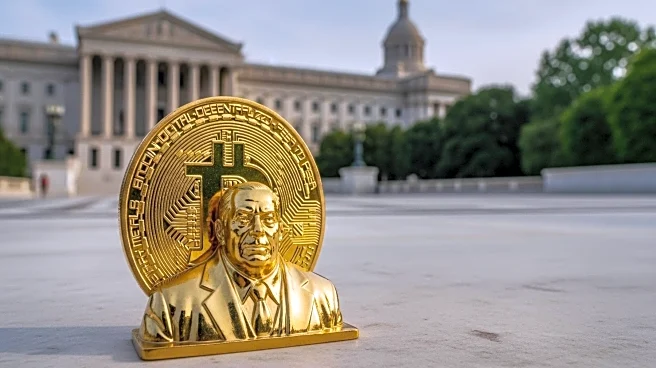What's Happening?
A 12-foot gold statue of President Trump holding a Bitcoin was unveiled outside the U.S. Capitol coinciding with a Federal Reserve interest rate cut. Funded by meme coin creators, the statue aims to provoke discussion on government currency and digital financial innovation. The creators, associated with a Solana meme coin, describe the statue as a bridge between modern politics and financial innovation, thanking Trump for his perceived role in accelerating Bitcoin adoption. Reactions are mixed, with supporters viewing it as a tribute and critics dismissing it as spectacle.
Why It's Important?
The statue highlights the intersection of politics and cryptocurrency, reflecting President Trump's influence on Bitcoin's public perception. It underscores the growing role of digital currencies in political discourse and monetary policy. The timing with the Fed's rate cut suggests potential political influence over economic decisions, raising concerns about the independence of monetary policy. Economists warn that such stunts could undermine confidence in U.S. debt and fuel inflation, illustrating the tension between political spectacle and institutional credibility.
What's Next?
The statue's removal does not end the controversy, as discussions about its implications continue. Stakeholders in the financial and political sectors may react to the perceived politicization of monetary policy. The event could prompt further debate on the role of cryptocurrency in government and its impact on economic stability. Observers will watch for any shifts in public policy or regulatory changes influenced by such political and financial intersections.
Beyond the Headlines
The statue's religious iconography-like appearance raises cultural questions about the blending of political figures with financial symbols. It reflects the meme culture's impact on modern politics, where visual stunts can overshadow substantive policy discussions. This phenomenon may influence public memory and discourse, prioritizing spectacle over meaningful regulatory change.

